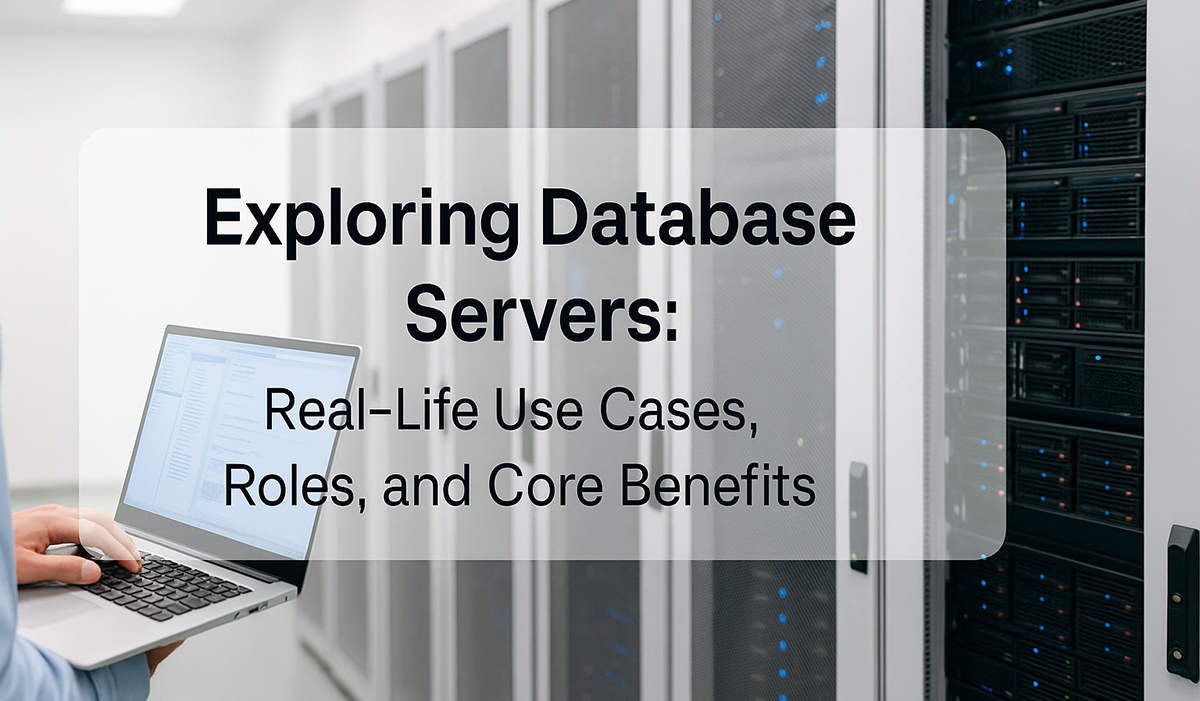No products in the cart.
 Database Servers Demystified: What They Are and Why They Matter
Database Servers Demystified: What They Are and Why They Matter
In the modern digital world, data is the core element that drives all applications. From e-commerce platforms and banking systems to healthcare portals and social media apps, every click, transaction, or search relies on data being processed and delivered in real time. At the heart of managing this vast flow of information lies the database server a specialized system designed to store, retrieve, and manage data efficiently, securely, and at scale.
These servers act as the central nervous system of any digital infrastructure, ensuring that data is not only available when needed but also consistent, accurate, and protected from loss or unauthorized access. Whether you’re browsing a website, using a mobile app, analyzing business reports, or conducting online transactions, database servers are silently working behind the scenes, powering your experience and ensuring operations run seamlessly.
What Is a Database Server?
A database server is a specialized system that operates a database management system (DBMS) and facilitates database-related services to other devices or software applications. It stores and manages data, allowing clients to access and manipulate it through queries.
Key Benefits of Database Servers
- Centralized Data Management: Guarantees that all data is maintained in one secure location
- Efficient Data Retrieval: Optimized for quick and accurate data access.
- Scalability: Ability to accommodate increasing data and user demands.
- Security: Provides robust mechanisms to protect sensitive information.
- Data Backup and Recovery: Enables processes for backing up and recovering data to avert loss of information.
Types of Database Servers
- Relational Database Servers (RDBMS): Store data in structured tables and use SQL for data manipulation.
- Prominent examples include MySQL, PostgreSQL, Microsoft SQL Server, and Oracle Database.
- NoSQL Database Servers: Handle unstructured or semi-structured data, offering flexibility in data storage.
- Example include: MongoDB, Cassandra, Redis.
- In-Memory Database Servers: Store data in the system’s main memory (RAM) for faster data retrieval.
- Example include: Redis, Memcached.
- Cloud-Based Database Servers: Hosted on cloud platforms, offering scalability and remote access.
- Significant instances in this regard are Amazon RDS, Google Cloud SQL, and Azure SQL Database.
Key Roles of Database Servers
- Data Storage: Safely stores large volumes of data.
- Data Retrieval: Responds to queries by fetching the requested data.
- Data Manipulation: Supports the processes of data insertion, modification, and removal.
- Transaction Management: Ensures the integrity and consistency of data during the entire transaction process.
- User Access Control: Administers user permissions and access rights.
Real-Life Use Cases
- E-commerce Websites: Handle product inventories, customer information, and transaction histories.
- Banking Systems: Process account details, transaction records, and financial data.
- Healthcare Systems: Store patient data, manage appointment bookings, and keep track of medical records.
- Content Management Systems (CMS): Manage website content, user data, and media files.
- Mobile Applications: Sync user data and preferences across devices.
Database Server vs. Web Server
To understand the distinction, here’s a comparative table:
| Feature | Database Server | Web Server |
| Primary Function | Manages and stores data | Serves web pages and handles HTTP requests |
| Communication | Uses database protocols (e.g., SQL) | Uses HTTP/HTTPS protocols |
| Data Handling | Handles structured data | Serves static and dynamic content |
| Examples | MySQL, PostgreSQL, MongoDB | Apache, Nginx, Microsoft IIS |
Database servers are integral to modern applications, providing the infrastructure needed to store, manage, and retrieve data efficiently. Understanding their role and functionality can help in designing scalable and secure systems. Whether you’re developing a new application or optimizing an existing one, choosing the right database server is crucial for success.Stay updated! Follow us on social media! Facebook, Twitter, LinkedIn
Check out our newest blog entry (Why Proactive Hosting Support Wins Every Time)



 Database Servers Demystified: What They Are and Why They Matter
Database Servers Demystified: What They Are and Why They Matter